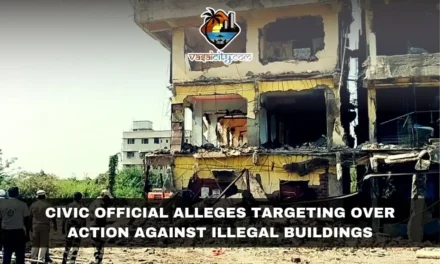In a recent development that has stirred the communities of Vasai-Virar, the Bombay High Court made a significant ruling on Thursday. It dismissed petitions seeking to exclude 29 villages from the jurisdiction of the Vasai-Virar Municipal Corporation (VVMC). This decision has solidified the status of these villages as part of the municipal corporation, ending a longstanding dispute that has spanned over a decade.
Let’s take a step back to understand the roots of this issue. Back in 2009, the formation of the VVMC was heralded by merging 4 municipal councils and 55 village panchayats. This ambitious move was aimed at fostering development and providing better infrastructure and services to the rapidly urbanizing area. However, not everyone was on board with this plan. The inclusion of 29 villages into the municipal corporation was met with resistance from the residents and local activists of these areas. They were concerned about losing their rural identity and the potential negative impacts on their traditional way of life. Their opposition led to widespread protests, culminating in a significant public movement against the merger.
In response to the growing unrest, the then Chief Minister, Prithviraj Chavan, issued an ordinance on May 31, 2011, to exclude these 29 villages from the VVMC’s jurisdiction. This decision was seen as a victory for the protesters, but it was short-lived. The VVMC challenged the decision by filing a petition, arguing for the inclusion of the villages within its administrative area. This legal battle has been ongoing, with the case languishing in the courts for years.
Fast forward to February 14, 2024, the state government issued a new notification, reinstating the inclusion of the 29 villages into the VVMC. This move was based on the rationale that integrating these villages would ensure uniform development and better service delivery across the region. Following this, Shankar Jadhav, the deputy secretary of the state, requested the High Court to dismiss the pending petitions against the inclusion of the villages.
The court’s decision to dismiss the petitions has been met with mixed reactions. On one hand, it marks the end of a 12-year-long legal struggle, affirming the government’s stance on urban development and planning. On the other hand, it has reignited the debate on the preservation of rural identities and the autonomy of village communities.
Critics of the government’s decision, including advocate Jimmy Ghonsalvis, argue that the notification to include the villages is unlawful and that the implementation of this decision has yet to be fully realized. They claim that the villages have effectively been excluded from the VVMC, despite the recent court ruling. In a surprising turn of events, however, the dismissal of the petitions was celebrated by activists who had initially opposed the merger. A victory celebration was organized by the Congress party in Vasai, marking what they perceive as a win for their long-standing campaign.
This complex saga reflects the challenges of urban planning and development in rapidly growing areas. The integration of rural villages into urban municipal corporations is not just a matter of administrative convenience; it touches on deeper issues of identity, tradition, and the future direction of development. While the High Court’s ruling has settled the legal aspect of this dispute, the broader conversation about governance, development, and community rights is far from over.
In conclusion, the decision to keep the 29 villages within the VVMC marks a significant moment in the region’s history. It underscores the complexities of managing urban expansion in a way that balances development needs with community concerns. As the dust settles on this legal battle, the focus now shifts to how the integration process will unfold and the measures that will be taken to ensure that the needs and voices of the village communities are addressed. The story of Vasai-Virar’s villages is a testament to the enduring spirit of local communities in shaping their destinies, amidst the sweeping tides of urbanization.













